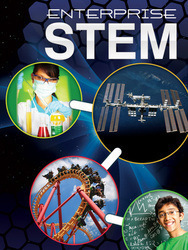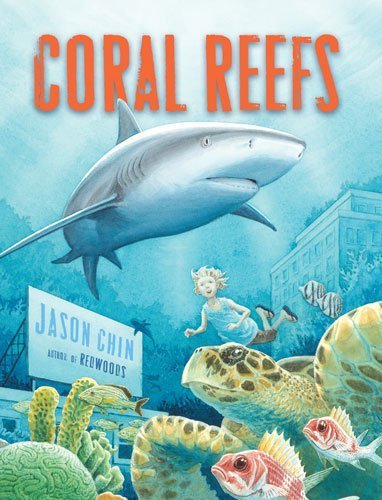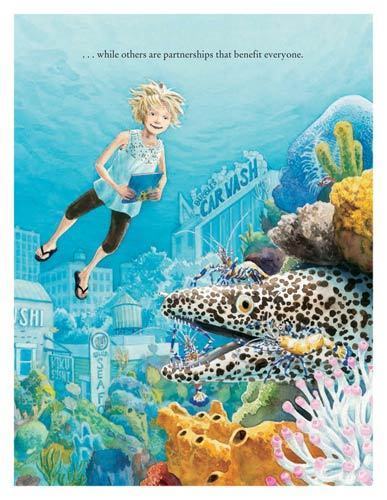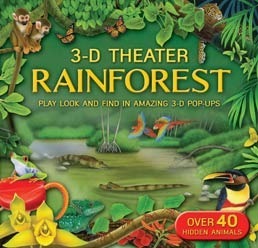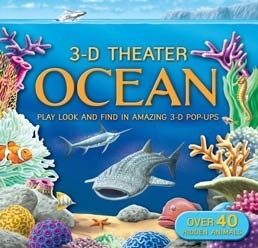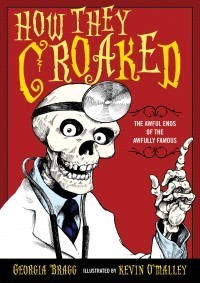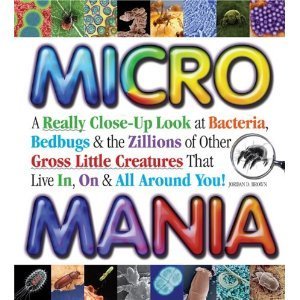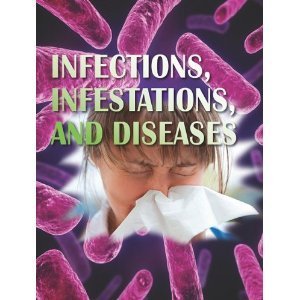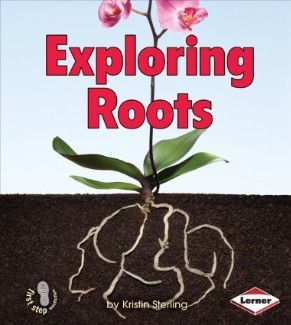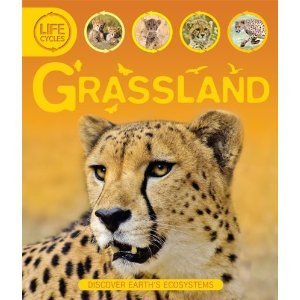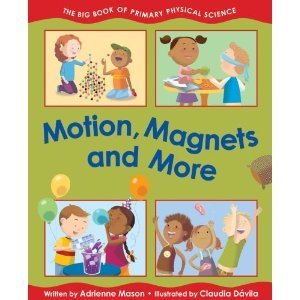Shirley Smith Duke's Blog, page 7
November 15, 2011
Enterprise STEM
By Shirley Duke
Let's Explore Science series
Rourke, 2012 (is available now)
ISBN #978-1-61741-781-8
Grades 4-6
Nonfiction
Enterprise STEM is one of my latest books and my author copies arrived last week! It's a timely topic and I learned a great deal about the subject while writing it. There hasn't been much written for children on this topic, so I'm pleased and excited to not only have been a woman in a STEM subject myself but to have had the opportunity to write about it.
Everyone has probably heard of STEM by now, but knowing what it is helps clarify its significance. It is NOT stem cell research, although that does fall into one of the STEM subjects. STEM is the future and it's important to know what it is.
STEM stands for science, technology, engineering, and math. The enterprise part of the subjects is included in the body of knowledge and steps it takes to acquire that knowledge by the people who work in it.
"I'd rather clean my room than do math."
"Taking out the garbage is more fun than science."
These comments reflect the attitudes of some students in schools today. Yet the U.S.is falling far behind in world rankings in math and science scores.
The book defines Enterprise STEM and the subjects it incorporates. It tells characteristics of people who would be successful in STEM fields. It includes information about the collaboration among teams of scientists in a variety of fields and how they work to solve real world problems. It contains information about people working in STEM occupations and what they do and shows some of the technology that will help in the future. The final chapter includes ways students can get involved in STEM subjects at an early age so that as they work in these fields, they will be able to direct the future.
Short sidebars give additional information relating to STEM in some way. The book has a glossary, photos with captions, an index, websites to visit, and about the author—that's me!
The next time someone mentions STEM, you'll be familiar with the topic and able to discuss ways to incorporate these important subjects in your own field.
Activity
Look up and research products that came about as a result of the space program or developed by accident. Create a presentation that includes technology to share the findings.
NASA has a good list of products here and on the spinoff page.
This site has nine accidental discoveries, but you have to click through each one.
National Science Standards: Interdependence of Science, Engineering, and Technology; Influence of Engineering, Technology and Science on Society and the Natural World
Book provided by Rourke Publishing as author copies—and the author is me!








November 8, 2011
Coral Reefs
By Jason Chin
Roaring Brook Press, 2011
ISBN: 978-1-59643-563-6
Nonfiction picture book with fantasy element
"For more than 400 million years, corals have been building reefs in the earth's oceans. Corals may look like plants, but they are actually animals. Some are soft and sway back forth in the water, while others, called hard corals, are rigid. Corals are made up of polyps, and most have hundreds of tiny polyps on their surface."
A young girl pulls a book off the shelf at the New York Public Library and begins to read. Like the boy carried into the forest in Redwoods, she is swept into the undersea world of corals. Before this happens, however, Chin presents some of the fascinating information about corals and the skeletons of these animals that form coral reefs. As the girl experiences slides into the coral reefs, she meets up with the plants and animals that live there.
Chin brings to life the brilliant colors and variety of animals living in the tropic seas where reefs are formed. Each spread presents information and brings what the child is reading to life. This book provides excellent information and makes the relationships among the life there clear and real.
This book slips into the undersea world more effortlessly than Redwoods. It's lovely and lush—and guaranteed to be popular, especially among New York librarians!
Activity 1
Create a food chain or web from the organisms in the book.
This site has a food chain explanation.
Activity 2
Look up the term for the relationship between two animals that is mutually beneficial called mutualism. Find other examples of beneficial relationships.
Here are two examples.
Activity 3
Find ways some of the animals have adapted to escape their predators using the book's information.
Visit my post on Follow That Food Chain Coral Reefs post to pair the books and find more activities.
National Science Standards: Interdependent Relationships in Ecosystems, Cycles of Matter and Energy Transfer in Ecosystems, Ecosystems Dynamics, Functioning, and Resilience
Book provided by Blue Slip Media and Macmillan Children's Publishing Group








November 3, 2011
WELCOME TO STEM FRIDAY
Add your STEM Friday post in the Mr. Linky section below and comment if you like.
By Kathryn Jewett
Illustrated by Fiammetta Dogi
Kingfisher, 2011
ISBN #978-0-7534-6467-0
Ages 4-8
"Stand still for a moment on the forest floor and armies of ant will stomp over our feet. Leeches start slinking toward you, hungry for blood. The trees above block out most of the light, so fungi, ferns, and mosses grow where the green plants can't. It may be dark and damp, but this is one of the busiest layers of the forest."
This gorgeous pop-up book puts the rainforest in a 3-D view to illustrate and narrate the rainforest layers and its inhabitants. Every other page gives information about the animals and plants living in that level. Alternating pages pop out to form a view deeper inside the rainforest. Cut out pop-ups fill the forest niches with animals and plants found there. Additional animal information is found around the edges of each theater scene.
This twenty page book is fun to read or simply look at. It's remarkably sturdy and readers can find something new each time it was read. It would be a wonderful way to introduce rainforests to the classroom or make a lovely gift at birthday or holiday time.
Activity 1
Develop a food chain based on the plants and animals in the book.
Activity 2 (for younger children)
Identify the animals in the book or practice the colors of the life found inside the rainforest.
National Geographic has short information and pictures of rainforests.
This site explains a simple food chain.
This site has some rainforest activities.
National Science Standard: ecosystems dynamics, functioning, and resilience
Book provided by Kingfisher








October 25, 2011
3-D Theater Rainforest and 3-D Theater Ocean
It's finally caught up with me. Be careful what you wish for, because it may come true. I wanted to be a writer. I am. That's good. With deadlines. Not so good for my blog.
That said, I'm on a panel the next three days, so I'll have barely enough time to make the November 1 deadline for my last book in the series I'm writing for Rourke. It's the Let's Explore Science and will be my 8th book with them.
Come back next week and I'll have a terrific new pair of 3-D books from Kingfisher on some great topics. I hope to see you back here next week.




 [image error]
[image error]


October 18, 2011
How They Croaked
The Awful Ends of the Awfully Famous
By Georgia Bragg
Illustrated by Kevin O'Malley
ISBN #9780802798176
Ages 10-14
Nonfiction
Death is usually not a funny subject: not one little bit. However, I'd love to have a conversation with this author. What an idea for a book and what a fascinating set of stories! This was a really funny, interesting book.
It is believed that Henry VIII's remains exploded within his coffin while lying in state.
Doctors "treated" George Washington by draining almost 80 ounces of blood before he finally kicked the bucket.
Albert Einstein's brain was stolen from his corpse.
I was prepared not to like this book. Snarky nonfiction usually sends me flying. But I picked it up and read the first chapter. I laughed out loud. On the King Tut chapter, this paragraph reeled me in and left me laughing, and I quickly finished the book. The ancient Egyptians believed the heart was the control center of the mind. It's about preparing Tut's body for the tomb.
"They didn't take Tut's teeth, nails, and eyeballs. They left Tut's heart in his body because he was going to need that to think. And they left his genitals so no one would think he was Queen Tut."
I kept laughing as I read at the allergist's office and at lunch. Out loud. This book belongs—no begs—to be in every middle school library and in all public libraries. It's perfect for science and history and that strange little being that middle schoolers are.
Activity
Research some of medical treatments used in the book. Then find a corresponding science discovery that would have aided the historical figure with modern day knowledge.
Here's a good place to start looking.
National Science Standard: Influence of Engineering, Technology and Science on Society and the Natural World
Book provided by Walker & Co. for Librarians' Choices Book Review Committee at TWU.
 [image error]
[image error]






October 11, 2011
Three For One! Germs, Diseases, and Gross Little Creatures
A Really Close-Up Look at Bacteria, Bedbugs, and the Zillions of Other Gross Little Creatures that Live In, On, and All Around You!
By Jordan D. Brown
Imagine Publishing, 2009; reprint, 2011
ISBN-13: 978-1936140473
Ages 9-12
Nonfiction
Which leads to:
By Richard Platt
Illustrated by John Kelly
Kingfisher, 2011
ISBN-13: 978-0753466872
Ages 9-12
Nonfiction
And then we go on to my take on the topic:
Infections, Infestations, and Diseases
By Shirley Duke
Rourke, 2011
Ages 9-12
Nonfiction
Take a closer look at all three books.
MICRO MANIA
"Try not to panic, but there are billions of tiny creatures crawling all over your skin. They are wriggling on your legs, your arms, your nec, your scalp… EVERYWHERE!"
Micro Mania covers the world of bacteria, pests such as fleas and ticks, food pests like ants, roaches, beetles, and moths, along with kitchen bacteria and where they all live and reproduce. Then the information moves to the bedroom and bathroom, with dust mites, bed bugs, and algae. Plankton, krill, and thermophiles round out the mix of these mini creatures that live with us. The book reveals the amazing characteristics of these organisms and presents the information in a medium gross way that should appeal to this age.
Activity
Look up information about the life cycle of a flea. Then read about the Bubonic Plague. Write a paragraph explaining what part fleas played in the plague's transmission.
Read about the flea life cycle here.
Here's some basic bubonic plague information.
PLAGUES, POX, and PESTILENCE
"Do you dare step inside the Pox Lab? In here, we study the history of the world's most horrible diseases."
Plagues, Pox, and Pestilence takes the reader deep into the story of diseases in this fascinating book. It includes the story of great epidemics, the people who made history in germs and disease prevention, and how science has provided the technology to fight these invaders today. The final chapter talks about the future of poxes and plagues.
The type adds to the fun of reading this book. It contains a thorough glossary of poxy words and an index. Bright, cartoonish characters add to the action and narration. This is another books kids should love.
Activity
Develop a timeline of scientific discoveries using the information from the book.
Here's a comprehensive example, but it would need to be narrowed to the examples used in the book.
INFECTIONS, INFESTATIONS, AND DISEASES
"Achoo!"
"Where's the Kleenex?"
"I don't feel well."
How many times has a teacher moved back or a mom has hurried to get the thermometer? Or you've checked for nits, worried over vaccines, or stayed up most of the night with a sick child? This book is a starting point for kids interested in what makes you sick or those who are curious about the world and themselves.
The first three chapters address the meaning of the title, covering health and illness, infestations, and then diseases. The next chapter continues with how they are spread, prevention and treatment, and eliminated and emerging diseases. The book addresses current topics like bed bugs, HIV, and the H1N1 flu virus. It has a table of contents, glossary, index, and suggested websites to visit.
Health is important to everyone, and eager young scientists and kids alike should enjoy the fascinating facts in the book. Each book in the series has straightforward science and facts presented in an interesting way to readers. I'm writing three new books for Rourke in the coming year. I can't wait to blog on them, too!
Activity 1
Research how to wash hands properly. Create a poster to display the correct techniques and practice singing happy birthday two times to show children how long they should spend scrubbing them.
The CDC has a child-friendly set of directions.
The Mayo clinic has additional information about dos and don'ts for hand washing.
Activity 2 (for older kids)
Look at the comparisons of hands that have been washed or cleaned in various ways. Draw a conclusion about the most sanitary means of cleaning hands and write a paragraph about how to properly wash hands to remove bacteria.
You can find good information and pictures here.
Here you'll find more interesting bacteria and hands information.
National Science Standards: biodiversity and humans; growth and development of organisms
Books provided by the individual publishers.








October 4, 2011
Exploring Roots
I'm behind due to a set of new books I'm writing.
I 'll have this terrific new roots book up sometime during the day on Wednesday. I hope you don't mind too much returning to see it. I've had a huge amount of interest generated by Carrots Grow Underground, so I'm featuring a new Lerner title on that topic.
I'm also going to be a judge for the 2nd round of Cybils judging in the MG/YA category. That should be a lot fun–reading some of the best nonfiction around!
Thanks for checking back. Roots are always fun!








September 28, 2011
POLAR LANDS
By Sean Callery
Kingfisher, 2011
Life Cycle Series
ISBN # 978-0-7534-6691-9
Ages 7 to 10
Nonfiction PB
"The Arctic and Antarctic regions are known as the polar lands. These are the toughest habitats in the world: dark all winter long, with freezing temperatures and storms. Against the odds, plants and animals live there."
If you're looking for a book about biomes/habitats and life cycles, Polar Lands (and other books in this series) is the perfect one for elementary-aged learners. Sean Callery takes a region and introduces it, then takes the reader along the food chain page by page. This book includes Arctic and Antarctic animals ranging from krill (which I especially liked, having never seen this organism's life cycle in a book) to seals to the Arctic wolf. The first page of the spread introduces the organism and traces its life cycle in four steps. A sidebar adds the animal's adaptation in three picture bulleted details and one more fact at the bottom, which leads the reader to the page turn and next animal in the food chain.
Bright photographs illustrate the text and a circular graphic presents the life cycle, interspersed with more photos. The spread out text and chunks of information make the book inviting and readable. Back matter includes a large silhouette diagram of the entire food chain, a glossary, websites, and an index.
This is one of the most clever ways of writing about and illustrating a food chain that I've seen in a book. It's clear and concise, making both the concept and life cycle easy to follow. I've read another book in the series, Grassland, and it's just as good. This is a terrific book for libraries and schools, and is great for reading and holding the interest of kids, especially animal lovers.
Activity 1
Take one of the animals from the book and create a graphic to show the food chain in which it is involved. Illustrate the steps along the way or print and cut out pictures for the animals.
National Geographic has good animal information and pictures.
Activity 2
Look up more information about the Arctic and Antarctic. Make a diorama or mural to illustrate its features and the life there. Label each animal.
National Geographic has lots of excellent information on ecosystems and biomes.
Activity 3
Choose an animal. Read more about the animal and create a list of ways it is adapted, or suited, to fit into its environment.
National Science Standards: Interdependent Relationships in Ecosystems; Growth and Development of Organisms; Growth and Development of Organisms
Book provided by Kingfisher.








September 20, 2011
Motion, Magnets, and More
The Big Book of Primary Physical Science
By Adrienne Mason
Illustrated by Claudia Dávila
ISBN #978-1-55453-707-5
Nonfiction
Grades PreK-2
"Stone, metal, paper, plastic—these are different materials. Everything around you is made of some kind of material. A marble is made of glass, and this book is made of paper."
Motion, Magnets, and More begins with an introduction to materials on a primary level. The first activity it suggests is using those materials, and from there it goes on to give activities using the senses. This beginning to qualitative observations is subtle but important, because it sets a strong foundation for the science behind the activity. The topics include materials, magnets, mass, structures, systems, shapes, solids, liquids, gases, motion, forces, friction, and gravity.
The book covers the physical science of motion, magnets, and concepts relating to this field. It provides answers to everyday questions and asks questions that will trigger thinking about the reasons why. The book holds 115ish pages of activities and questions. The back matter includes an extensive section for parents and teachers that further explains the activity. The final spread holds the extensive glossary.
Fun, cartoony art fills the pages to support the simple text and break up the writing. Large, bold titles indicate the activity and key points are in boldface to stand out. Bright margins line the lively art.
This book includes the text of several earlier books by the author, who included additional subjects to make it more comprehensive. It's not easy to find physical science for the younger kids, but this book does—and it's terrific. I loved this book. It's a great way to get science into your home, library, or classroom. Every library needs one.
Activity
Choose one of the activities from the book. Carry it out. Then use the scientific method form to write up your experiment.
This site explains the scientific method for young experiementers.
Here's a form.
National Science Standards: Structure and Properties of Matter, Structure and Properties of Matter, Forces and Motion
Book provided by publisher for Librarians' Choices Book Review Committee








September 13, 2011
The Kingfisher SCIENCE ENCYCLOPEDIA
The Kingfisher Science Encyclopedia
3rd Edition
By Charles Taylor and Kingfisher Editors
Kingfisher, 2011
ISBN #978-0753466889
Reference; middle grade nonfiction
Grades 5-9
This title will be released onOctober 25, 2011.
"The ground beneath our feet seems to be the most solid and unchanging thing we know. It forms foundations for our cities and an environment in which we can live. Yet, in reality, the Earth is spinning on it axis and hurtling through hostile space, as it orbits the nuclear furnace of our sun. The Earth is an active, dynamic, living planet."
My sons laughed when I mentioned that I used to read the Britannica encyclopedia when I didn't have a book on hand, but it's true. I had insomnia as a child, and I'd slip downstairs, choose a volume, and browse, reading each entry in turn. If I'd had this book as a child, I'd have been thrilled.
This comprehensive science encyclopedia covers the fundamentals of life science, earth science, physical science, plus materials and technology and conservation. It's colorful and inviting and well-sectioned off into two page spreads on many of the pages, so it's welcoming and readable without being overwhelming. The focus is divided into sections by the branch of science and skimming the table of contents proved easy.
Back matter includes a conversion table, several appendices, and an easy-to-read index. The clear concise nature of this book makes it one that all middle schools should have. It could also be appropriate for upper elementary students, as well as ESL and reluctant readers in high school. This is a valuable resource for all public libraries in their reference section and school libraries, too. It's a wonderful holiday gift book and an excellent reference gift for a special kid. Take a look at this terrific book!
I flipped open the book and looked—I'd landed on information about the elements. It brought to mind a blog post I'd written for NOVA's web program, "The Secret Life of Scientists." That gave me an idea for this activity.
Activity
Browse the science encyclopedia. Choose an interesting subject and read about it. Then write a short science cheer about that subject. Be sure to include important information relating to it. Perform your cheer for your friends or family—or just read it!
If cheering isn't your cup of tea (although cheering for science is always good!), write a poem to express some facts or make an acrostic poem with the word.
Take a look at my cheer for the Periodic Table of Elements.
Here's how to make an acrostic poem.
Check out these examples of acrostics.
National Science Standards: pretty much all of them
Book provided by Kingfisher.








Shirley Smith Duke's Blog


